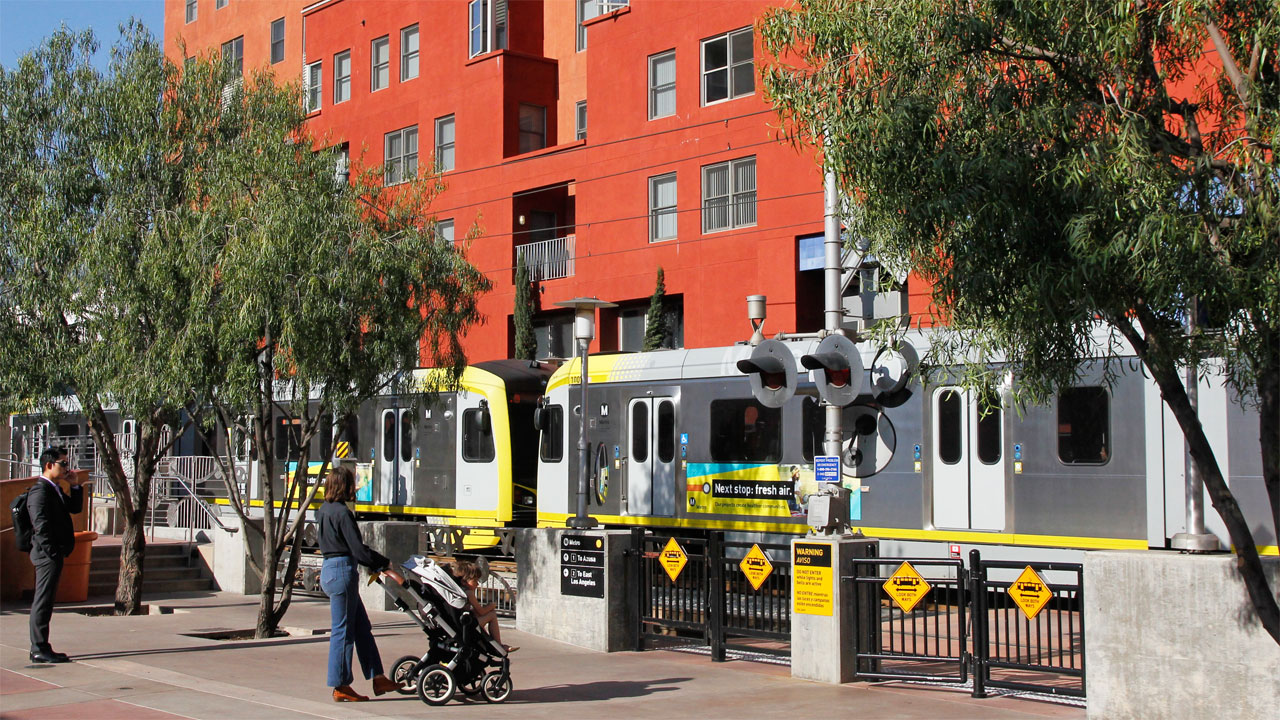
Sierra Club chapters across the country are doing important work with cities, regions, states, and transit agencies to promote less driving by improving public transit and changing land use for more walkable, bikeable and transit-friendly communities.
Providing viable choices for people to move around our communities is critical to building healthier and safer communities - where everyone, no matter our race, age, identity, income or zip code - can thrive. This work is essential for climate action, racial justice, and environmental justice.
This work complements the Clean Transportation for All’s work to achieve 100% electric cars, trucks, and buses and strong federal vehicle pollution standards toward the Sierra Club's overall goal of a 50% reduction in oil use by 2030.
Our vision: Cities and communities are vibrant and verdant, compact and convenient, dense, mixed-use, fun, beautiful, efficient, and safe places to live, work, shop, and play, walk, bicycle, and take transit, improving our health and mood, and greatly reducing the need to drive. Electric rail and bus transit are widespread, and streets prioritize safe and pleasant public transit, biking, and walking over automobiles and sprawl. Cars for other trips, trucks and trains are electric, and all are powered by clean wind and solar electricity.
Campaign Actions
-
Promote inviting, affordable, dense, and equitable mixed-use infill development;
-
Expand rail and bus transit networks and service, and create good regional transportation and land use plans;
-
Expand complete and green streets for safe biking and walking;
-
Promote incentives to drive less and shift trips to transit, biking, walking, scooting, and carpooling, and reform parking requirements and pricing;
-
Shift funding from highway expansion to responsible solutions for less driving, sprawl, and reduced climate impact.
We just released Sierra Club’s first Infill Guidance!
This guidance document is advisory only- it does not set any new policy for the Sierra Club. To provide meaningful guidance to activists in applying the 2019 Urban Infill Policy at the local level, this resources gives an overview of how land-use decisions get made, how to get involved in the process to ensure that urban infill policies are included in local plans and ordinances, what types of housing and transportation projects, plans, and policies we should support and oppose, and how to guarantee adequate and meaningful public participation, especially by historically underrepresented groups.
The guidance shows how general principles from the policy, such as that every neighborhood should be inclusive, compact and walkable, can be achieved across a spectrum of contexts, from single-family neighborhoods to transit corridors, and from rural towns to urban centers.
Resources
-
Sierra Club’s Energy Resources Policy (pages 11-12) summarizes our goal:
"Reduce the need to drive passenger vehicles by shortening the distance between workplace, home, shopping and school, using 'smart growth' planning and improved transportation options. Provide safe and appealing options for walking, bicycling and mass transit, including light rail passenger trains, which will reduce vehicle trips, emissions, fuel consumption, and the demand for new roads and pavement. Well-designed mixed-use communities create long-term reductions in energy usage."
-
Smart Growth Calculator – density, cars, VMT, gas, costs, roadway, water, shopping, transit
-
Sierra Club's Smart Choices or Sprawling Growth: 50 State Survey
-
Smart Growth reduces autos and driving in Chicago, LA and San Francisco (Smart Growth – As Seen From the Air)
-
Using Residential Patterns and Transit To Decrease Auto Dependence and Costs (CHEERS)
-
How Compact Neighborhoods Affect Modal (walk, cycle, transit, drive) Choice – Three Examples
Updated 11/04/21